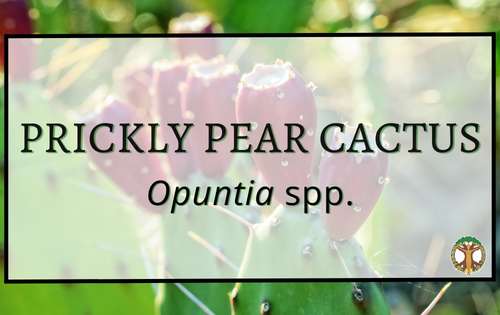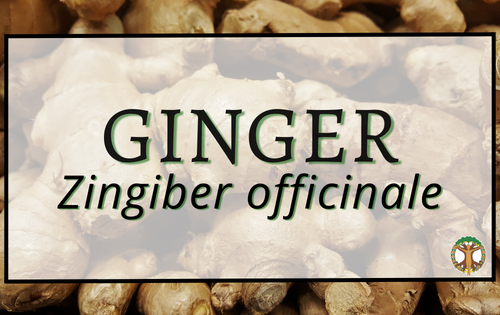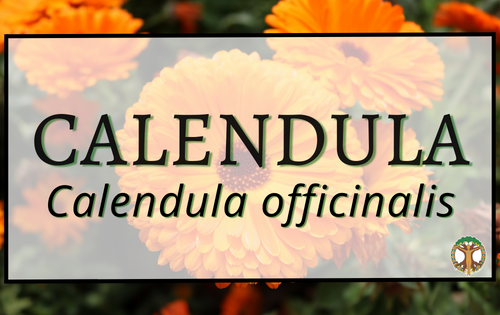
Garlic
by Shay DeGrandis
Common Names: Garlic, Ail, Ajo, Camphor of the Poor, Da Suan (TCM), Nectar of the Gods, Poor Man’s Treacle, Rason/Lasunam (Ayurveda), Stinking Rose
Latin Name: Allium sativum
Family: Alliaceae (previously listed as Amarylidaceae and Liliaceae)
Habitat: With approximately 500 species native throughout the Northern Hemisphere, almost all cultures across the world have grown and utilized some type of garlic. Most garlic is currently cultivated in China and India while some is imported from South America. California is the largest grower in the U.S.
There are two types of garlic: hardneck and softneck. Either type is generally easy to grow in temperate climates but because it requires approximately 40 days of vernalization (cold exposure) to harden the bulb before it can grow again in the spring, only softneck garlic can be cultivated in Florida and only in the northern part. In tropical climates, garlic can be grown for the green aerial parts. Garlic is asexual and grown as a clone from the cloves of the bulb. To grow a new plant, separate each clove, place them individually into the ground root side down. It does best in full sun, slightly acidic, rich, well-drained soil, free of weeds.
Parts Used: Cloves (bulb), greens (immature flower stalks known as scapes)
History/Tradition: Celebrated for its herbal healing properties, garlic’s intense aroma and reputation precedes it. Worshipped, revered, and despised worldwide and cross-culturally for its curative, protective, stamina-boosting, and magical powers, garlic is one of the most flavorful and popular culinary spices around the world.
The Latin word for garlic, Allium, comes from the Celtic word all, meaning pungent and the species name, sativum, simply means cultivated. While the medicinal compound, allicin, wasn’t isolated and studied in the laboratory until 1944, it is believed garlic has been cultivated for at least 5,000 years. Originating in the Middle East, the various uses of garlic are recorded in the oldest records such as on Sumerian clay tablets, written in Akkadian, dating back to 3500 years ago, 1700 BCE, although it was most likely propagated prior to the use of the written word. In the Ebers Papyrus — ancient Egypt’s most complete surviving medical text from 1552 BCE — garlic is mentioned to help with 22 different ailments, many of which have been scientifically proven today. Historical documents found around the world (Egypt, the Middle East, Ancient Greece and Rome, Korea, India and China) as well as in the books of the major world religions (Judaism, Islam, Christianity, Hinduism, Taoism and Buddhism) reveal how garlic was, and still
is, one of the most widespread medicines and charms known to man. Garlic’s potency makes it one of the few herbs used in the world’s three major ancient healing systems: Indian Ayurveda, Traditional Chinese Medicine, and Traditional European/Folk medicine.
Garlic was written about positively by Pliny the Elder, Galen, Homer, Dioscorides, Nostradamus, Mohammed, Huang-Ti (TCM), Charaka (Ayurveda), although the history of garlic is ripe with contradictions. The mythology of garlic shows how it was thought to be so powerful, it held the potential of immortality, the strength upon which entire civilizations were founded. Considered a perilous stimulant, it was often used (or avoided) as an aphrodisiac, a perfect offering to the gods, and feared as the harbinger of evil. Garlic was believed strong enough to spawn gods and, at the same time, birth demons. During the last four millennia, garlic has been used to treat common ills (Galen said garlic had so many uses, he named it theriaca rusticorum, “cure-all for the poor”); stimulate the mind and body; ward off and protect against the malocchio (evil eye), witches, vampires, envy, mosquitoes and the plague. Garlic was also, simultaneously, condemned as the source for many ills (mental, spiritual, and olfactory alike) and was used as an odiferous marker throughout the centuries to negatively delineate and discriminate against social, economic, and ethnic classes.
While focus on the history of cultivated garlic tends to be on the written records available from European and Asian sources, foraged, uncultivated bulbs from the allium family were utilized similarly on the North American continent by the indigenous tribes prior to the arrival of settler-colonists, many of whom depended on the wild versions from the Allium family when access to their beloved garlic was unattainable.
Energetics
Flavor: Pungent, Spicy
Temperature: Heating, Warming
Moisture: Drying
Tissue State: Tight, Stimulating
Indications
Eating garlic regularly can boost your immune system, inhibit pathogens, and be an over-all preventative for getting sick. Consumption of garlic increases the natural killer cells of the immune system and reduces inflammatory cytokines (chemical messengers of the immune system). It can be eaten more often during acute conditions such as upper respiratory infections, colds, flu, sore throats, coughs, bronchial congestion and fevers. Garlic has antimicrobial and stimulating diaphoretic actions, fighting off pathogens and heating the body to support the fever process. Raw garlic’s spiciness increases mucus flow, thinning it and expelling it from the body, to relieve congestion. Taken at the onset of an illness, garlic can shorten both the duration and severity of symptoms. If you can smell garlic on your breath (even if you placed garlic oil on your feet), it means the antimicrobial constituent, allicin, is traveling through your system working away. The heating, drying and opening action of garlic can also support those with other respiratory ailments such as allergies and asthma. Often combined with mullein in an infused oil form, its decongestant and antimicrobial action make garlic suitable for infections and congestion within the ear canal as well.
Garlic stimulates metabolism and appetite. The spicy and stimulating energetics of garlic make it effective for weak or stagnant digestion, minor issues such as gas, bloating, or loss of appetite to more acute and chronic conditions like small intestine bacterial overgrowth (SIBO), yeast infections, parasites, and dysentery. Garlic is effective as an broad-spectrum antimicrobial against bacteria, fungi, and amoebas. Studies have shown it to be effective against a variety of pathogens including Escherichia coli, Helicobacter pylori, Staphylococcus aureus, Candida albicans, methicillin-resistant Staphylococcus aureus (MRSA), and Salmonella spp. Considered a vermifuge, consumption can prevent and inhibit further parasitic growth and diarrheal pathogens, especially during foreign travel. Although considered an “herbal antibiotic” by many, “anti-biotic” means “anti-life”. Garlic, unlike pharmaceutical antibiotics, does not kill all the bacteria in your system. In fact, garlic contains a high amount of inulin — a PRE-biotic which feeds the good bacteria flourishing in a healthy digestive tract. Because of this, some people may be sensitive to a large amount of garlic eaten all at once (particularly roasted garlic) which may cause excessive gas. It is best to start with a smaller amount and work up.
Regular intake of garlic is beneficial for the cardiovascular system as well. Garlic’s antioxidant qualities support general hearth health. Studies have shown taking garlic, particularly from fresh garlic or aged garlic extracts, can optimize cholesterol levels, modulate systemic inflammation, and reduce oxidative stress. This reduces the occurrence of arterial stiffness and, in turn, lowers the chance of atherosclerosis. In those with mild hypertension, studies have shown aged garlic may lower blood pressure. Human studies have shown garlic may benefit those with insulin resistant and type 2 diabetes, although more information and trials are needed.
Garlic is anti-inflammatory, counteracting lower back and joint pain, arthritis and rheumatism.
Garlic is shown to support men’s health and as an aphrodiasiac. It increases circulation, reducing a hardening of the arteries in groin area, and stimulates the production of nitric oxide synthase, the enzyme needed for men to achieve an erection. It may also help promote prostate health — reduce prostate mass, increase urine flow, and decrease urinary frequency.
Garlic has shown potential as an anti-carcinogenic and may reduce the risk of several cancers. Research indicates garlic may help prevent and inhibit cancer-causing viruses, hepatitis and human papilloma. Studies have shown the allyl sulphur compounds may prevent the transformation of normal cells to tumorous cells, help the body flush out carcinogens and cause cancer cells to die naturally. It also stimulates the production of glutathione, an antioxidant that breaks down toxins, protects and repairs cell membranes and DNA, helps removal & detoxification of carcinogens.
Used for Hypertension, Fungal infections, Bacterial infections, Optimizing cholesterol levels, Colds & cough, Influenza, Fever, Bronchial congestion, Small intestinal bacteria overgrowth (SIBO), Digestion, Loss of Appetite, Asthma, Dysentery, Plague, Parasites, Type 2 Diabetes, Insulin resistance, Arthritis, Rheumatism, Joint Pain.
Systems
Cardiovascular, Digestive, Respiratory, Integumentary, Immune, Muskuloskeletal
Actions
Circulatory stimulant, Alterative, Stimulating diaphoretic, Stimulating expectorant, Antimicrobial, Anti-inflammatory, Carminative, Immune modulating, Vermifuge
Cautions
Some people are allergic to garlic and should avoid it altogether. Raw garlic can cause nausea or be emetic. Those with sensitivity to garlic may experience digestive distress from over-consumption. Start with small amounts to build tolerance and use sparingly.
Garlic is hot in nature. In its raw form, it can burn the mouth, esophagus, and the skin (may cause blisters on the skin after long-term use). Do not leave compresses on for too long. Use caution or a buffering agent (such as vinegar, honey, or oil) when consuming. Do not give large doses of raw garlic to children by mouth.
People with a hot and dry constitution will do best to use sparingly.
Eating a large amount of garlic at once (around two entire heads (not cloves)), may negatively affect the gut flora. Garlic may amplify the affect of diabetes medications, use caution.
Consult a health care practitioner if you have a bleeding or blood clotting disorder or if you take any blood thinning medications (i.e. aspirin, non-steroidal anti-inflammatories, anticoagulants, orantiplatelet meds) before beginning a garlic protocol.
Garlic inhibits blood-clotting so stop taking or eating 7 days before surgery.
Consult a doctor if you are pregnant or breast-feeding. Garlic as a flavoring agent is generally considered safe but pregnant women should use caution as it is a mild emmenagogue. Studies show garlic may help lower the risk of pre-eclampsia (a dangerous condition which causes high blood pressure) and can help to increase the in utero weight of underweight babies. Some babies may also like the taste of garlic as it emanates through mother’s milk and are more likely to latch and drink when it’s present.
Constituents
Once cut, the chemical constituents of garlic change over time. Allicin is the main active ingredient in garlic and gives it protective, antimicrobial, and immune-boosting qualities. Allicin is only available when the garlic has been cut or bruised and there is a short waiting period afterwards to allow the enzyme alliinase to convert alliin into allicin. The organo-sulphuric compounds in garlic make it a good source of antioxidants, as well as proteins and inulin, a pre-biotic. Other constituents include allyl sulfide (which may prevent the transformation of normal cells to tumorous cells), vascular enzyme allicinase, vitamins A & C, selenium, nicotonic acid (niacin: B3), ajoene (responsible for the anticoagulant properties), flavonoids and certain minerals.
Culinary Use
Used for thousands of years as a culinary spice in whole, chopped, grated, pasted, pickled, fermented and powdered forms, it can be consumed both raw and cooked (i.e., roasted, fried, baked, sautéed, decocted, infused). When garlic is cut or crushed, it releases allicin, the chemical constituent giving garlic is healing properties and intense aroma and flavor. (Intact garlic does not contain any allicin at all). The garlic should sit for about 10-15 minutes after being chopped to allow for this allicin release to occur. While medicinal properties are higher when garlic is closer to the raw state, it is best to either buffer this hot spice with other ingredients such as oil, vinegar, or honey; cook it lightly or place within other foods. It can be
added to dishes and snacks in dried, powdered form but the powder has much less potency than in other forms. This pungent, spicy, extremely flavorful, and versatile bulb is a popular ingredient and staple spice for almost every culture around the world. It can be added to soups, stocks, sauces, condiments; used for flavoring vegetables, grains, pulses, seafoods, and every type of meat. Although generally considered for use in savory dishes, garlic can be added to desserts, jams, drinks, nut butters, and soaked in honey for adding to other dishes or to eat straight out of the jar.
Do not keep in plastic bags and never store your garlic in the refrigerator.
Other Uses
Compresses or fomentations of garlic were historically used to prevent infections in wounds by inhibiting bacterial growth. Applied this way to the skin, it may be effective in treating fungal skin infections such as ringworm, jock itch, or athlete’s foot.
Oil infused with garlic can be used on the skin to reap the benefits of garlic without consuming. This is useful for those who may be digestively or taste sensitive to garlic, like children, for whom it is too pungent. Rub onto the soles of feet, cover with cotton socks overnight, to help reduce a fever or onto the chest for congestion.
Garlic infused oil, on its own or combined with mullein flowers, can also assist to clear ear infections or congestion. Slightly warm the oil and place a drop or two in the sore ear canal.
In folk medicine, a suppository of intact garlic is used to treat vaginal yeast infections however it may cause other complications and irritation. Use with caution.
An infusion of garlic, often mixed with dish soap and cayenne, may repel aphids, cabbage worms, slugs, caterpillars, mites, Japanese beetles, deer and rabbits and hence it is a good companion plant to lettuce, spinach, potatoes, beets, eggplant, tomatoes, peppers, cabbage, broccoli, kohlrabi and raspberries; flowers such as marigolds, nasturtiums, geranium, roses and petunias; and herbs such as yarrow, chamomile, rue, and dill. Garlic is also good to plant near all fruit trees, particularly peaches and apples to protect them from borers and apple scab.
DO NOT PLANT GARLIC near beans, peas, asparagus, parsley or sage as their growth will be inhibited.
References
- Austin, Daniel F. Florida Ethnobotany. CRC Press, 2004.
- Brandies, Monica Moran. Herbs and Spices for Florida Gardens: How to Grow and Enjoy Florida Plants with Special Uses. B B Mackey Books; 1st edition, 1996.
- Bergner, Paul. The Healing Power of Garlic,The Enlightened Person’s Guide to Nature’s Most Versatile Medicinal Plant. The Crown Publishing Group, NY, 1995.
- Cherry, Robin. Garlic: An Edible Biography. Roost Books, Boston, 2014.
- de la Fôret, Rosalee. Garlic Monograph on HerbMentor: https://herbmentor.learningherbs.com/ herb/garlic/
- de la Foret, R. Alchemy of Herbs: Transform everyday ingredients into foods and remedies that heal. Hay House, Inc., 2017.
- Easley, Thomas; Horne, Stephen. The Modern Herbal Dispensatory: A Medicine-Making Guide. North Atlantic Books, 2016.
- Gladstar, Rosemary. Herbal Recipes for Vibrant Health: 175 Teas, Tonics, Oils, Salves, Tinctures, and Other Natural Remedies for the Entire Family. Storey Publishing, LLC, 2008.
- Kress, Henrietta. Garlic Monograph on HerbMentor: https://herbmentor.learningherbs.com/articles/monographs/garlic/
- Mase, Guido. The Wild Medicine Solution: Healing with Aromatic, Bitter, and Tonic Plants. Inner
Traditions International, Limited, 2013. - North American Institute of Medical Herbalism. http://naimh.com
- Tierra, Michael. An Integration of Western Herbs into the Traditional Chinese and Ayurvedic Systems. Lotus Press; 1st edition. 1992.
- https://lpi.oregonstate.edu/mic/food-beverages/garlic
- https://mountainroseherbs.com/garlic-granules
- https://www.ncbi.nlm.nih.gov/pmc/articles/PMC4103721/
- Wikipedia; https://en.wikipedia.org/wiki/Garlic






